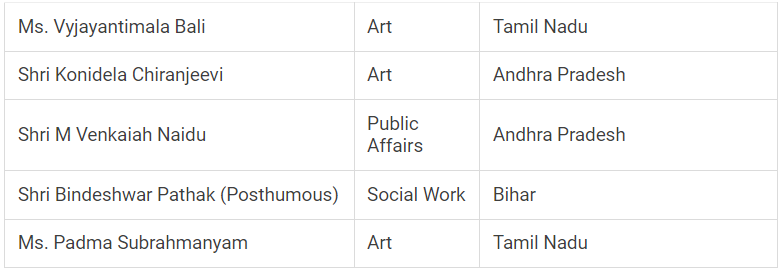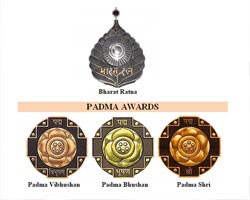SSC Current Affairs
| Awards | ||||||||||||||||||||||||||||||||||||||||||||||||||||||||||||||||||||||||||||||||||||||||||||||||||||||||||||||||||||||||||||||||||||||||||||||||||||||||||||
|---|---|---|---|---|---|---|---|---|---|---|---|---|---|---|---|---|---|---|---|---|---|---|---|---|---|---|---|---|---|---|---|---|---|---|---|---|---|---|---|---|---|---|---|---|---|---|---|---|---|---|---|---|---|---|---|---|---|---|---|---|---|---|---|---|---|---|---|---|---|---|---|---|---|---|---|---|---|---|---|---|---|---|---|---|---|---|---|---|---|---|---|---|---|---|---|---|---|---|---|---|---|---|---|---|---|---|---|---|---|---|---|---|---|---|---|---|---|---|---|---|---|---|---|---|---|---|---|---|---|---|---|---|---|---|---|---|---|---|---|---|---|---|---|---|---|---|---|---|---|---|---|---|---|---|---|---|
|
|
||||||||||||||||||||||||||||||||||||||||||||||||||||||||||||||||||||||||||||||||||||||||||||||||||||||||||||||||||||||||||||||||||||||||||||||||||||||||||||
|
Subject: Polity
(Relevance: The Indian Civilian Awards are significant for the UPSC CSE, as they are the highest civilian honors in the country. In the past, UPSC has asked question on these awards; for instance, in the UPSC CSE prelims 2021, there was a question regarding the Bharat Ratna and Padma awards.) Why in the news? As controversy continues over Home Minister Amit Shah “insulting” Dr BR Ambedkar in Parliament, the BJP and its supporters have repeatedly cited one fact to claim that the Congress “did not respect” Babasaheb — that successive Congress governments did not award him the Bharat Ratna. In this context, let’s know about the Bharat Ratna and other civilian awards of India. Key Takeaways : 1. Awards serve as symbols of appreciation and honor given to individuals who have made notable achievements across various professions. Among the most prestigious honors are India’s Civilian Awards, which are announced annually on January 26th, Republic Day, and presented to the recipients by the President of India. 2. The Government of India had instituted two civilian awards, Bharat Ratna and Padma Vibhushan, in 1954. The latter had three classes, namely Pahela Varg, Dusra Varg and Tisra Varg. These were subsequently renamed as Padma Vibhushan, Padma Bhushan, and Padma Shri in 1955. Bharat Ratna: 1. The Bharat Ratna, also known as the ‘Jewel of India’ or ‘Gem of India’, is India’s highest civilian honour, bestowed upon individuals who have made exceptional contributions to the nation’s progress and prosperity. 2. Established in 1954 by then-President Rajendra Prasad, it is made of bronze and designed in the shape of a peepal leaf, embossed with the sun. The reverse side bears India’s emblem, the ‘Ashok Chakra’, and the motto, ‘Satyameva Jayate’. 3. Initially awarded for achievements in literature, science, the arts, and public services, the Indian government expanded the criteria in 2011, as it is a symbol of national gratitude and recognition, impacting India and its people through its contributions. 4. The recommendations for Bharat Ratna are made by the Prime Minister to the President. No formal recommendations for this are necessary. The Prime Minister is free to consult or obtain advice from any one he chooses. However, as per practice, the Ministry of Home Affairs (MHA) receives several recommendations, which are forwarded to the Prime Minister’s Office. The MHA is the nodal ministry for these awards. 5. The number of awards is normally restricted to a maximum of three in a year. The recipient or (if posthumously) someone on his/her behalf receives a Sanad (certificate) signed by the President and a medallion. It does not carry any monetary grant. 6. As per the Table of Precedence issued by the MHA, Bharat Ratna awardees find place just behind Union Cabinet Minister. Do you know? As per Article 18 (1) of the Indian Constitution, the award cannot be used as a prefix or suffix to the recipient’s name. “No title, not being a military or academic distinction, shall be conferred by the State,” the Article states. However, an award winner can write “Awarded Bharat Ratna by the President” or “Recipient of Bharat Ratna Award,” in their biodata or letterhead, the MHA states. Padma Awards: 1. Padma Awards, one of the highest civilian awards of the country, are conferred in three categories, namely, Padma Vibhushan, Padma Bhushan and Padma Shri. 2. The awards are given in various disciplines and fields of activities – art, social work, public affairs, science and engineering, trade and industry, medicine, literature and education, sports, civil service, etc. 3. Except for interruptions in 1978, 1979 and between 1993 and 1997, every year the names of the recipients of Padma Awards are announced on Republic Day eve and are conferred by the President of India at ceremonial functions which are held at Rashtrapati Bhawan usually in March – April every year. 4. The awardees do not get any cash reward but a certificate signed by the President apart from a medallion which they can wear at public and government functions. 5. While a Padma awardee can be given a higher award (i.e. a Padma Shri awardee can receive a Padma Bhushan or Vibhushan), this can only happen after five years of the conferment of the previous award. 6. Notably, all persons without distinction of race, occupation, position or sex are eligible for these awards. However, government servants including those working with PSUs, except doctors and scientists, are not eligible for these awards. 7. There is no rigid criteria or trenchant formula for selection, according to MHA. However, the lifetime achievement of an individual is among the main considerations. 8. All nominations received for Padma awards are placed before the Padma Awards Committee, which is constituted by the Prime Minister every year. The Padma Awards Committee is headed by the Cabinet Secretary and includes Home Secretary, Secretary to the President and four to six eminent persons as members. The recommendations of the committee are submitted to the Prime Minister and the President of India for approval. Padma Vibhushan: Padma Vibhushan is the second in the hierarchy of civilian awards. It was instituted in 1954 and is awarded for exceptional and distinguished service. Following are the five Padma Vibhushan Awardees of 2024:  Padma Bhushan: Ranking third in the hierarchy of civilian awards, Padma Bhushan was instituted in 1954 as well. It is awarded for distinguished service of a high order to the nation in any field, including services rendered by government servants like doctors and scientists, excluding those working with public sector undertakings. Padma Shri: The fourth-highest civilian award in the Republic of India, Padma Shri, was instituted in 1954. It is given to Indian citizens in recognition of their outstanding contributions in a variety of fields, including the services provided by government employees. Bharat Ratna Awardees from 1954 till 2024: Here is a list that highlights the diverse contributions of each awardee, ranging from arts and music to politics and science, reflecting the broad scope of the Bharat Ratna award in recognising exceptional service of the highest order.
|
||||||||||||||||||||||||||||||||||||||||||||||||||||||||||||||||||||||||||||||||||||||||||||||||||||||||||||||||||||||||||||||||||||||||||||||||||||||||||||
| >> More SSC Current Affairs | ||||||||||||||||||||||||||||||||||||||||||||||||||||||||||||||||||||||||||||||||||||||||||||||||||||||||||||||||||||||||||||||||||||||||||||||||||||||||||||
